In 2023, as NASA pushed the limits of exploration for the benefit of humanity, the agency celebrated astronaut Frank Rubio becoming the first American astronaut to spend more than one year in space; delivered samples from an asteroid to Earth; sent a spacecraft to study a metal-rich asteroid for the first time; launched multiple initiatives to share climate data; advanced developments in sustainable aircraft; all while continuing preparations to send the first Artemis astronauts to the Moon.
“This year, NASA continued to make the impossible, possible while sharing our story of discovery with the world,” said NASA Administrator Bill Nelson. “We’ve launched missions that are helping tell the oldest stories of our solar system; continued to safely transport astronauts to the International Space Station to conduct groundbreaking science; our Earth satellites are providing critical climate data to all people; we’re making great strides to make aviation more dependable and sustainable; and we’re growing our commercial and international partnerships as we venture back to the Moon and on to Mars. NASA is home to the world’s finest workforce, and there is no limit to what we can achieve when we work together.”
In support of the Biden-Harris Administration’s efforts to address climate change, NASA is leading the development of U.S. government-wide initiatives focused on bringing Earth science information to the public. The Earth Information Center, a new interactive exhibit at NASA Headquarters in Washington, also includes an online experience that invites visitors to see Earth as NASA sees it from space while providing critical data needed by researchers and policymakers.
Among other notable mentions, the agency’s James Webb Space Telescope – the largest, most powerful telescope humanity has ever put in space – celebrated one year of science. NASA and the Defense Advanced Research Projects Agency (DARPA) announced the two organizations will partner on DRACO (Demonstration Rocket for Agile Cislunar Operations) to test a nuclear-powered rocket in space as soon as 2027.
This year NASA celebrated 25 years of International Space Station operations as the agency continued to foster the growth of the commercial space economy, supporting the development of commercial space station partnerships. It also marks the 65th anniversary of the agency. While celebrating these achievements, NASA also unveiled its NASA 2040 vision for the agency to ensure it remains a global leader in aerospace for decades to come.
Below are additional highlights of NASA’s endeavors in 2023 to explore the unknown in air and space, innovate for the benefit of humanity, and inspire the world through discovery.
Understanding Our Changing Planet
NASA has used its unique vantage point of space to better understand our changing planet since launching its first Earth science satellites in the 1960s. In 2023, NASA’s Office of the Chief Scientist established a cross-agency working group and released a climate strategy. Other agency efforts to share scientific data on Earth.gov and other areas include:
- Working with its partners, NASA launched the U.S. Greenhouse Gas Center, opening access to trusted data on greenhouse gases.
- Data from NASA’s Earth Surface Mineral Dust Source Investigation (EMIT) instrument aboard the International Space Station is part of the gas center. EMIT identifies point-source emissions of greenhouse gases with a proficiency greater than expected.
- NASA’s tracking of greenhouse gases includes both global and focused estimates.
- Building on the month-by-month worldwide temperature data collected and released by NASA and National Oceanic and Atmospheric Administration both agencies are expected to announce soon 2023 was the warmest year in recorded history.
- A NASA airborne campaign helped show that methane ‘hot spots’ in the Yukon-Kuskokwim Delta are more likely to be found where recent wildfires burned into the tundra, altering carbon emissions from the land.
- After successfully launching to space earlier this year, NASA’s TEMPO (Tropospheric Emissions: Monitoring of Pollution) mission to study air quality now is successfully transmitting information about major air pollutants over North America.
- NASA’s SWOT (Surface Water and Ocean Topography) mission offered the its first detailed perspectives of Earth’s surface water.
- Among natural hazards, NASA data was put to use in monitoring the heavy rains occurring in the drought-stricken areas, heat waves, wildfires, and subsequent health affects worldwide, as well as expansion of NASA landslide data.
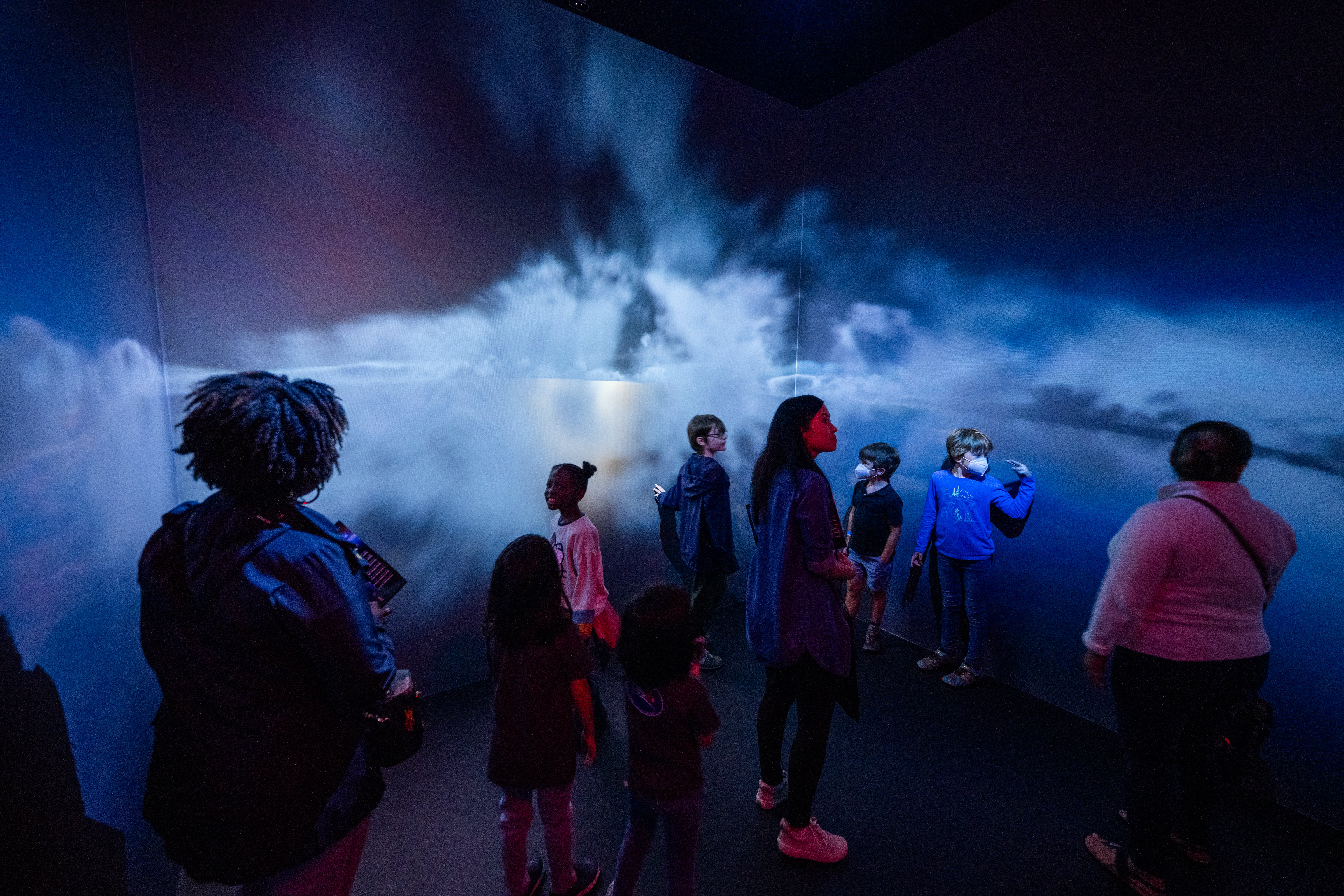
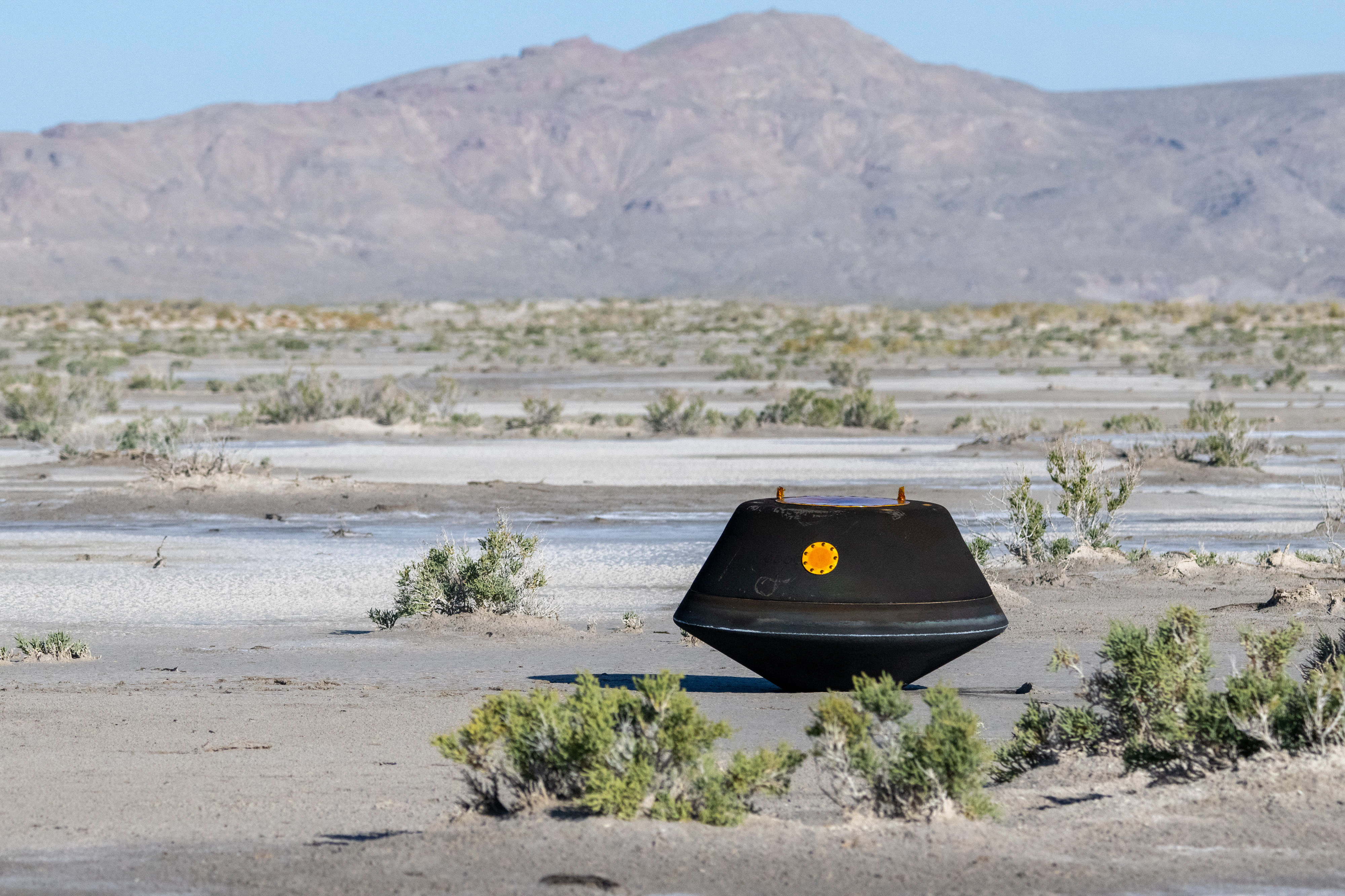
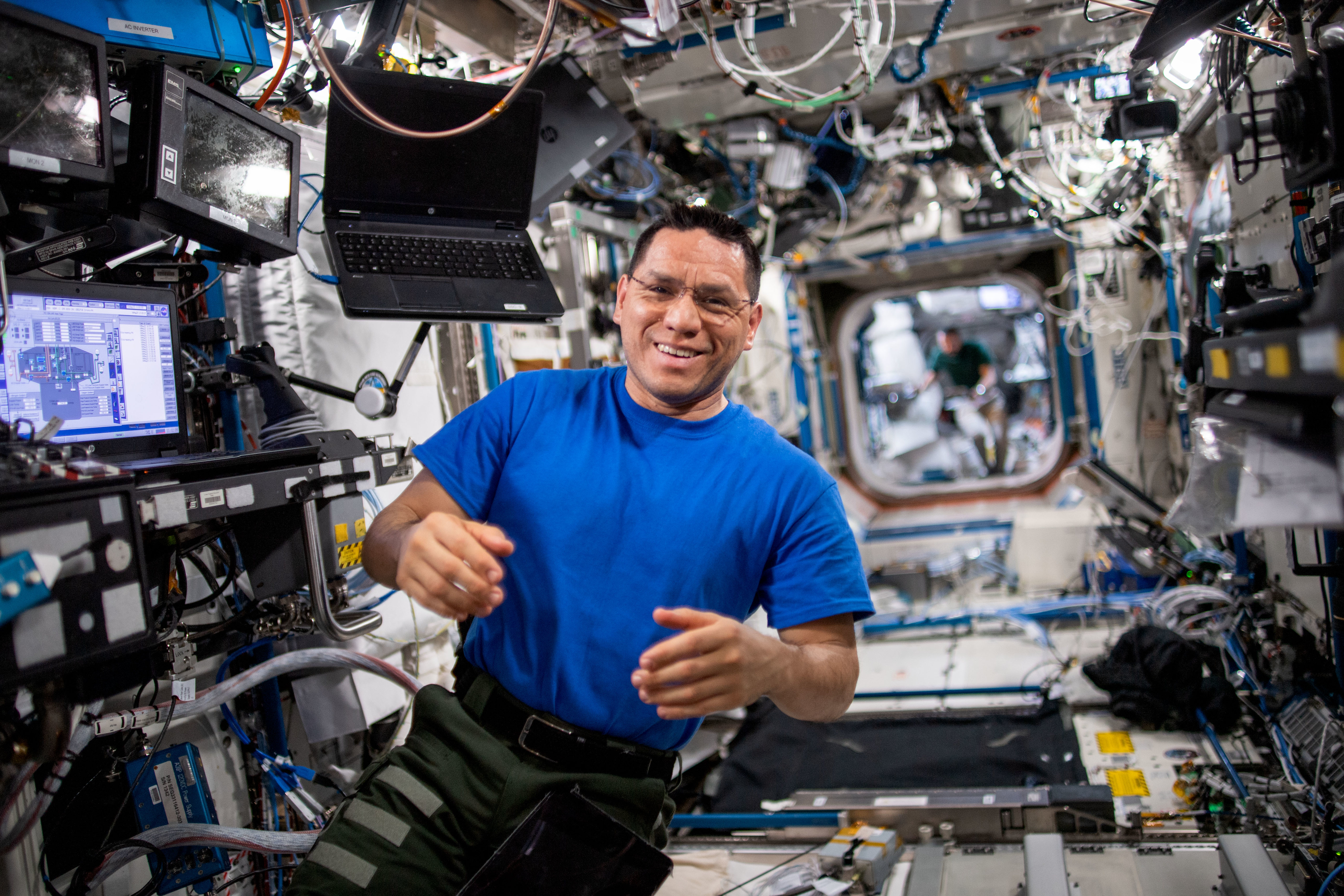
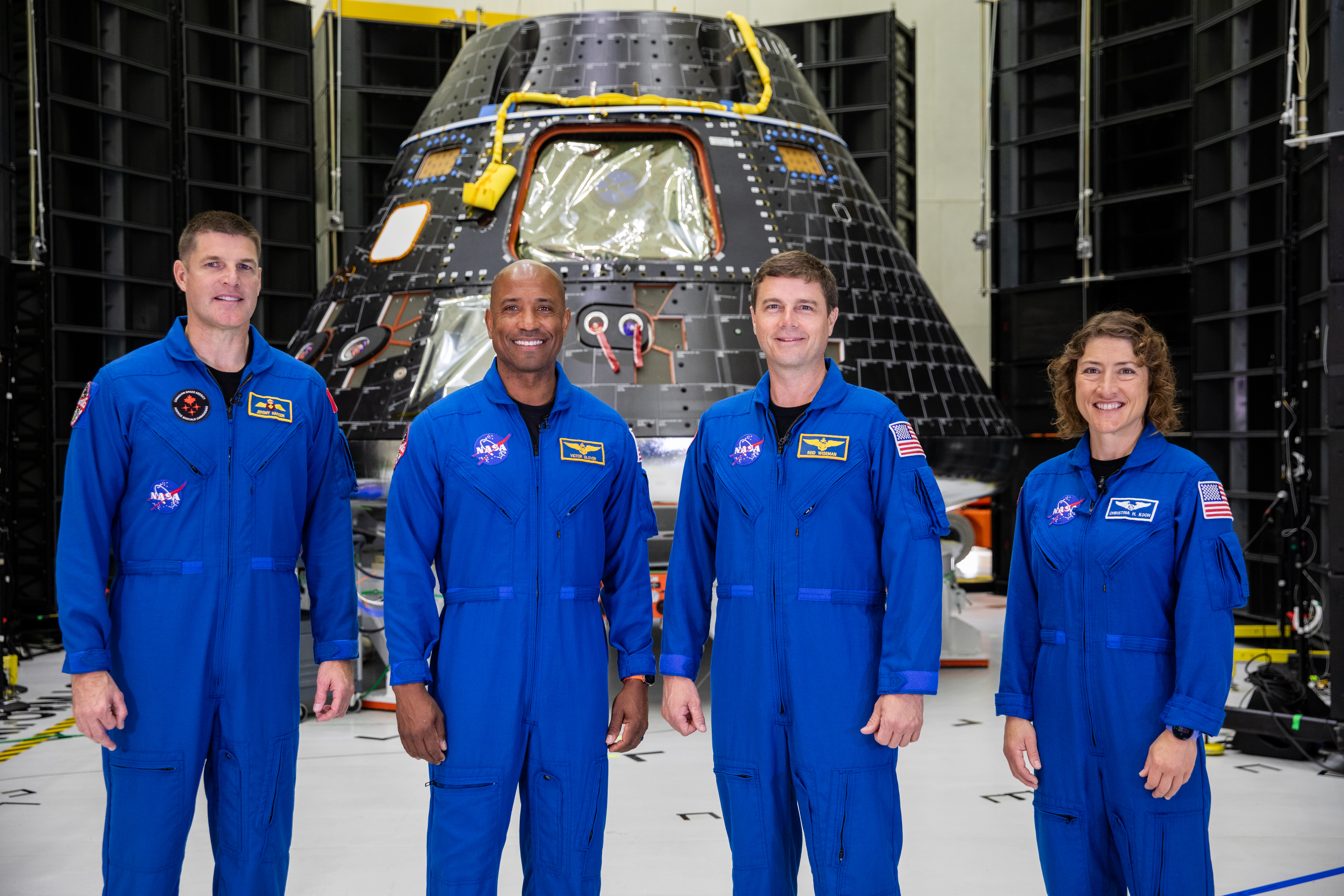
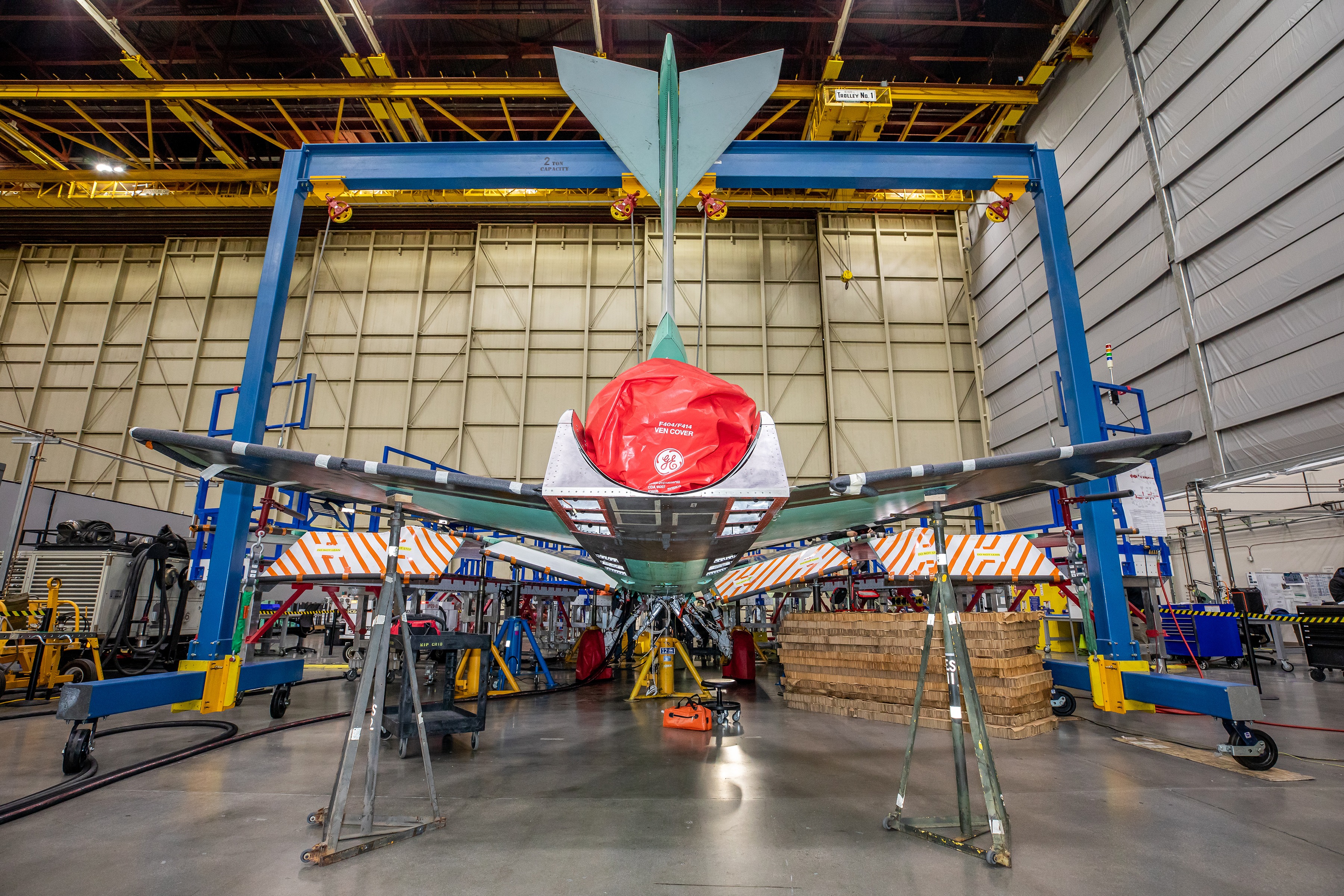
Advancing Moon to Mars Exploration
This year, NASA shared results of its first Moon to Mars Architecture Concept Review as it builds a blueprint for human exploration throughout the solar system for the benefit of humanity. The agency also continues to take significant steps toward landing the first woman and first person of color on the Moon as part of Artemis. Notably in 2023, NASA announced crew for the Artemis II mission, the first Artemis mission with astronauts around the Moon and back to Earth. The crew completed fundamentals training, and is now focusing on training for mission operations. Additional highlights for human deep space exploration include:
- All major elements for the SLS (Space Launch System) rocket for Artemis II are complete or nearing completion including booster segments delivered to NASA’s Kennedy Space Center in Florida and final core state assembly testing at NASA’s Michoud Assembly Facility in New Orleans.
- Upgrades and refurbishments continue at Kennedy with the mobile launcher and launch pad, including a water flow test and launch operations simulation.
- NASA made progress on Artemis III, which will send the first humans to explore the region near the lunar South Pole, building on the previous flight tests and adding a human landing system and advanced spacesuits for moonwalks.
- The solid rocket booster segments and the four RS-25 engines are complete for the Artemis III SLS, as well as three of the five major core stage elements. Teams are integrating elements of Orion’s crew module, and the European Service Module.
- NASA selected the geology team to develop a lunar surface science plan for Artemis III.
- Beyond Artemis III, teams completed welding the primary structure for Gateway’s HALO (Habitation and Logistics Outpost), where astronauts will live and work in lunar orbit. Fabrication is complete on the primary structure of the Power and Propulsion Element that will provide power, communications, and maintain Gateway’s orbit.
- In addition to other hardware assembly and certification work for later missions, Artemis V will include a lunar terrain vehicle. NASA asked SpaceX to further develop Starship for Artemis IV, and also selected Blue Origin to develop a human lunar lander for Artemis V.
- Experiments aboard the International Space Station focused on helping astronauts go farther and stay longer in space. This research included growing sustainable crops such as dwarf tomatoes, understanding how microbes adapt to space to protect crew health, and developing innovative materials that can weather the harsh environments of the Moon and Mars.
To support future NASA Moon missions with crew, the agency’s CLPS (Commercial Lunar Payload Services) initiative is in the final phases of preparations for the first two launches and landings to deliver NASA science and technology demonstrations to the lunar surface.
- Five NASA payloads are aboard Astrobotic’s Peregrine Mission 1 lander, which is set to launch no earlier than Monday, Jan. 8. Soon after, another six NASA payloads will launch no earlier than Friday, Jan. 12, aboard Intuitive Machine’s Nova-C spacecraft.
- Since launching CLPS, NASA has contracted with five companies for eight deliveries to the lunar surface. Most recently in 2023, NASA selected Firefly Aerospace for a delivery.
- Among future CLPS payloads is NASA’s first robotic lunar rover, VIPER – short for the Volatiles Investigating Polar Exploration Rover. The rover will trek into permanently shadowed areas to unravel the mysteries of the Moon’s water and better understand the environment. In preparation for a landing in late 2024, scientists named VIPER’s mission area in honor of NASA mathematician Melba Roy Mouton. Development, assembly and testing also continues for the rover’s solar and battery systems.
While NASA is leading Artemis, international partnerships are a key part of advancing Moon to Mars exploration. In 2023, 10 additional countries signed the Artemis Accords, which lay out a common set of principles governing the civil exploration and use of outer space. So far, 33 countries have signed the Artemis Accords.
Maintaining Low Earth Orbit Operations
Closer to Earth, the International Space Station – humanity’s home in space – passed 25 years of operations. NASA and its partners officially extended operations plans for the microgravity science laboratory for the benefit of humanity. Other space station milestones in 2023 include:
- NASA and SpaceX continued regular crew rotation flights to and from station, helping maximize science in space, including:
- NASA astronauts Frank Rubio, Nicole Mann, Josh Cassada, Stephen Bowen, Woody Hoburg, Loral O’Hara, and Jasmin Moghbeli lived and worked aboard the station.
- Rubio spent a U.S. record-breaking 371 days in space, contributing to a better understanding of long-duration spaceflight as we explore beyond our home planet.
- Crew-5 returned to Earth with Mann and Cassada, as well as JAXA (Japan Aerospace Exploration Agency) astronaut Koichi Wakata, and Roscosmos cosmonaut Anna Kikina. Crew members tested hydroponic and aeroponic techniques to grow plants without using soil, released Uganda and Zimbabwe’s first satellites, studied how liquids move in a container in simulated lunar gravity to generate data to improve Moon rover designs, and reinstalled the station’s bioprinting facility.
- Crew-6 included Bowen and Hoburg, as well as UAE (United Arab Emirates) astronaut Sultan Alneyadi and Roscosmos cosmonaut Andrey Fedyaev. The crew assisted a student robotic challenge, studying plant genetic adaptations to space, and monitoring human health in microgravity. The crew also released Saskatchewan’s first satellite, which tests a new radiation detection and protection system.
- Crew-7 carried Moghbeli, ESA (European Space Agency) astronaut Andreas Mogensen, JAXA astronaut Satoshi Furukawa, and Roscosmos cosmonaut Konstantin Borisov. This crew is conducting a variety of scientific research in areas such the collection of microbial samples from the exterior of the space station, the first study of human response to different spaceflight durations, and a study on astronaut’s sleep.
- NASA and Boeing continued to make progress on the company’s CST-100 Starliner spacecraft. Starliner and its crew of NASA astronauts Barry Wilmore and Sunita Williams are preparing for the first flight with astronauts in 2024, the final demonstration prior to regular flights to the microgravity complex.
- Space station crew members completed 12 spacewalks to upgrade and conduct maintenance at the orbiting laboratory before the year’s end. NASA astronauts continued work to install the International Space Station Rollout Solar Arrays (IROSA), which will increase power generation capability by up to 30% when fully complete.
- Six commercial cargo missions and international partner missions delivered about 28,000 pounds of science investigations, tools, and critical supplies to the space station. By year’s end about 12,500 pounds of investigations and equipment are planned to be returned researchers on Earth.
- Space station crew members welcomed the second NASA-enabled private astronaut mission, Axiom Mission 2, to the orbital complex advancing the agency’s goal of commercializing low-Earth orbit. NASA also selected Axiom Space for the third private astronaut mission and signed an order for the fourth mission with the company.
Some additional key investigations launched, and operating, on station included NASA and ISS National Lab releasing a joint solicitation to address the goals of the Biden-Harris Administration’s Cancer Moonshot initiative, which aims to conduct science in space to help cure disease on Earth; NASA’s ILLUMA-T (Integrated Laser Communications Relay Demonstration Low-Earth-Orbit User Modem and Amplifier Terminal) is now on station, which aims to test high data rate laser communications via the agency’s LCRD (Laser Communications Relay Demonstration); upgraded NASA’s Cold Atom Laboratory to continue pioneering quantum discovery in space; and launched and installed its Atmospheric Wave Experiment on station to provide insight into how terrestrial weather impacts space weather, which may affect satellite communications and tracking in orbit.
Also on the commercial front, NASA partnered with seven U.S. companies with unfunded Space Act Agreements, and released its third Request for Information for commercials space station services, while working toward a formal call for proposals to provide the agency with low Earth orbit services after the space station’s retirement. Commercial space station partners met major design and engineering milestones, and are on track to serve as potential replacements for the agency’s microgravity research needs. Two companies also are combining efforts, which will allow NASA to apply funding to the other stations to accelerate development.
Reaching Farther into Solar System, Beyond
As part of its first year of operations, NASA’s Webb telescope pulled back the curtain on some of the farthest galaxies, stars, and black holes ever observed; solved a longstanding mystery about the early universe; found methane and carbon dioxide in the atmosphere of a planet outside our solar system; and offered new views and insights into our own cosmic backyard. Additional achievements beyond the solar system included:
- NASA made important contributions to two missions that international partners launched this year: ESA’s Euclid mission to study dark energy and dark matter, as well as JAXA’s XRISM mission, a powerful new satellite that will revolutionize how we understand the hot, X-ray universe.
- The Nancy Grace Roman Space Telescope, NASA’s next flagship observatory, finished camera assembly, and its coronagraph instrument passed its first big optics test.
Autumn was host to mission milestone events that showcased the importance of our solar system’s smaller bodies.
- NASA’s OSIRIS-REx (Origins, Spectral Interpretation, Resource Identification, and Security-Regolith Explorer) spacecraft capped its seven-year journey with the successful deposit of a pristine sample of surface material from the asteroid Bennu in the Utah desert.
- NASA showed off material from the asteroid Bennu for the first time. Initial studies of the 4.5-billion-year-old asteroid Bennu sample collected in space and brought to Earth show evidence of high-carbon content and water, which together could indicate the building blocks of life on Earth may be found in the rock.
- The Psyche spacecraft launched from NASA Kennedy toward the asteroid Psyche.
- NASA’s Lucy spacecraft conducted its first target asteroid flyby of asteroid Dinkinesh at the inner edge of the main asteroid belt, and the first images now are online.
- An annular eclipse occurred on Oct. 14, visible in parts of the United States, Mexico, and many countries in South and Central America. NASA supported the event with engagement activities, as well as science research. Three Black Brant IX sounding rockets were launched to study the ionosphere – an electrically charged layer of the atmosphere – before, during, and after the peak eclipse.
NASA also kicked off Heliophysics Big Year, a public engagement campaign to make science and information accessible to all and showcase heliophysics-related efforts.
Technology Innovations to Benefit All
NASA’s Deep Space Optical Communications experiment launched aboard the Psyche spacecraft and achieved first light, beaming back a laser encoded with test data from nearly 10 million miles away. NASA will demonstrate data transmission rates 10 to 100 times greater than current radio frequency systems. The following are additional space technology advancements:
- Partnered with Aerojet Rocketdyne for qualification testing on the Advanced Electric Propulsion System, a cutting-edge solar electric propulsion thruster that will propel Gateway.
- NASA provided two navigation systems to Astrobotic for use on its CLPS flight: a Navigation Doppler Lidar to provide enhanced guidance and navigation capabilities, and the Terrain Relative Navigation to increase landing accuracy and help avoid hazards near the surface.
- NASA selected 11 U.S. companies to develop technologies in support of long-term space exploration. The agency also selected 12 companies to use subject matter expertise and facilities to advance capabilities related to NASA’s Moon to Mars Objectives.
- Launched the Starling swarm of small satellites to prove the agency’s ability to coordinate and cooperate satellites without real-time input from mission control.
- Tested multiple additively manufactured rocket engine nozzle designs, including on the ground, as well and aboard Relativity Space’s Terran-1 rocket.
- Finished MOXIE (Mars Oxygen In-Situ Resource Utilization Experiment) operations, and proved it is possible to extract oxygen from Mars.
Evolving Aviation’s Frontier
In 2023, NASA advanced aviation and aeronautics technologies to improve passenger experiences, stimulate U.S. economic growth, and create a future of cleaner, quieter, safer skies. Through its Sustainable Flight National Partnership and other efforts, NASA supported the U.S. goal of reaching net-zero aviation greenhouse gas emissions by 2050, and the agency released a new strategic implementation plan to guide research for the next 20 years and beyond. NASA also:
- Made new progress in its Quesst mission, as the X-59 quiet supersonic experimental aircraft had its tail structure installed and was moved from the assembly facility for structural testing.
- Worked with Boeing on the Sustainable Flight Demonstrator project to produce and test the X-66A, a full-sized, experimental transonic truss brace wing aircraft that will inform a new generation of sustainable airliners.
- Enhanced transonic truss braced wing research for sustainable aircraft designs using wind tunnel tests for model wings and supercomputing to look at aircraft concepts.
- Used NASA’s DC-8 flying lab to test emissions from Boeing’s ecoDemonstrator Explorer aircraft to evaluate sustainable aviation fuels’ effects on contrails..
- Progressed its Electrified Powertrain Flight Demonstration project, which works to create hybrid powertrains for regional and single-aisle aircraft, with GE Aerospace and magniX testing power systems and demonstrator aircraft
- Entered into an agreement with the U.S. Air Force AFWERX Agility Prime program that will allow NASA to test a new air taxi from the manufacturer Joby Aviation to see how such vehicles could fit into the national airspace
- Debuted the Advanced Capabilities for Emergency Response Operations project, which uses drones and advanced aviation technologies to improve wildland fire coordination and operations, and tested a mobile air traffic management kit.
- Demonstrated a breakthrough, 3D-printable, high-temperature-resistant alloy called GRX-810 that could be used for applications like components of aircraft and rocket engines.
Aeronautics efforts led to advancements in construction of the Flight Dynamics Research Facility, the agency’s first major wind tunnel in more than 40 years. NASA used simulators to collect data on how operating electric air taxis could affect pilots and passengers, and gathered data on new ways to use aviation including autonomous air cargo delivery and air taxi operations. Finally, research from the X-57 Maxwell provided aviation researchers with hundreds of lessons learned, as well as revolutionary development in areas ranging from battery technology to cruise motor control design.
Maintaining Focus on Advancing DEIA, Reaching Diverse Communities
NASA remained committed to advancing diversity, equity, inclusion, and accessibility (DEIA) at NASA and the STEM industry in 2023. NASA also took its “The Color of Space” documentary on a road tour, providing free in-person screenings at historically Black colleges and universities, conferences, and festivals nationwide. And, the agency made its Spot the Station app available for download in multiple languages.
As part of its plans to reach more audiences, NASA continued to focus on developing Spanish-language content. This year, the agency digitally released its second issue of the “First Woman: Expanding Our Universe,” graphic novel series in English and Spanish. NASA also:
- Launched its first full season of the Spanish-language podcast Universo curioso de la NASA.
- Following Rubio’s record-breaking year in space, NASA conducted news conferences in English and Spanish upon his return. Rubio also hosted the first tour of the space station in Spanish.
- Produced a live broadcast in Spanish for the arrival of the OSIRIS-REx samples, as well as co-streamed another broadcast in Spanish for the annular eclipse produced by the NASA-funded Exploratorium Museum.
- Revamped its Spanish-language science website, and launched a hub for all Spanish content on the new NASA.gov site.
- With the launch of NASA’s streaming platform NASA+, the agency debuted Spanish content also available for streaming, and developed Spanish-language content for Europa Clipper’s Message in a Bottle, among other activities.
Inspiring New Generation of STEM Students
Through a variety of science, technology, engineering, and mathematics (STEM) outreach activities, NASA continues to inspire the Artemis Generation of students and encourage them to become the next scientists, engineers, and astronauts. NASA conducts its STEM work through partnering with key organizations, awarding a variety of grants, and more. Many of these efforts tie closely to NASA’s DEIA activities. Other STEM highlights in 2023 include:
- Awarded $11.7 million to eight Historically Black Colleges and Universities through the new Data Science Equity, Access, and Priority in Research and Education opportunity. These awards will enable students and faculty to conduct innovative data science research that contributes to NASA’s missions.
- Partnered with the U.S. Department of Education to strengthen the collaboration between the two agencies, including efforts to increase access to high-quality STEM and space education to students and schools across the nation; and partnered with U.S. Forest Service to bring Artemis Moon Trees to schools and education institutions through NASA’s Artifact Module. NASA received more than 1,200 requests.
- NASA announced its first women’s universities and college awards, as part of a Biden-Harris Administration initiative. The awards provided more than $5 million in funding to seven women’s colleges and universities to research and develop strategies that increase retention of women in STEM degree programs and careers.
- Among Earth to space calls, Louisiana, Wyoming and Rhode Island hosted their first downlinks with the space station crew and students.
- NASA’s Human Rover Exploration Challenge hosted student competitors in-person for the first time since the COVID-19 pandemic. More than 500 students from around the world participated.
- Issued the NASA Space Tech Catalyst Prize to expand the agency’s network of proposers and foster effective engagement approaches within NASA’s Early-Stage Innovations and Partnerships portfolio.
- Invited teams to participate in NASA’s TechRise Student Challenge to design, build, and launch science and technology experiments on commercial suborbital rockets and high-altitude balloons. Summer 2023 marked a series of flight tests that successfully flew 80 student payloads on high-altitude balloons with Aerostar and World View.
- By partnering with Minecraft to inspire students in a game-based learning platform, children were encouraged to build and launch rockets on Moon adventures in the Minecraft universe.
- NASA’s Space Technology Research Grants program, which supports academic researchers, surpassed a significant milestone, having funded more than 1,000 grants pursuing exciting space technology research since.
NASA’s Growing Public Engagement Efforts
Public Engagement remains a cornerstone of NASA’s mission to share the agency’s work with the world by participating in opportunities to engage the public in a variety of venues, activities, and events. NASA continued to connect with more people than ever before:
- Grew the agency’s social media following to 389.5 million so far in 2023 – up 18 percent from 330 million in 2022.
- Shares on social media posts across the agency reached 6.36 million in 2023, lower than the 2022 total (8.7 million shares).
- NASA accounts reached follower milestones this year, passing 78 million (X), 26 million (Facebook) and 97 million (Instagram). NASA’s flagship YouTube channel passed 11 million.
- NASA elevated its digital platforms by revamping its flagship and science websites, adding its first on-demand streaming service, and upgrading the NASA app. With these changes, everyone now has access to a new world of content from the space agency.
- NASA’s new streaming service, NASA+, launched on Nov. 8, and as of Nov. 28 had 38,000 hours of content watched. The NASA app had about 34 million lifetime installs across all platforms.
- Apple Podcasts Latin America selected “Universo Curioso de la NASA” as a “Show We Loved” in 2023. This is the first time a NASA podcast has received this recognition.
- NASA podcasts surpassed 8 million all-time plays on Apple Podcasts this year.
- Supported White House events to reach the public in new and engaging ways including participating in the White House Easter Egg Roll, bringing in astronauts and STEM activities we engaged over 30,000 visitors, including students and children, with more than 148,000 mentions on social media across all platforms, as well as participating in Halloween at the White House engaging 6,000 local schoolchildren and military families with STEM activities.
- Worked with Elmo to introduce a video greeting from NASA astronauts aboard the space station for the Independence Day celebration and concert.
- NASA centers around the country hosted more than 1,289 in-person and virtual events with local, regional, national, and international reach, and engaged with more than 6.3 million people through these efforts.
- Participated in one of the largest state fairs in the United States in Columbus, Ohio, reaching an estimated 100,000 of the one million attendees through talks.
- Hosted an in-person International Observe the Moon Night, an annual celebration of lunar science and exploration, for the first time since 2019.
- NASA’s Arts program curated the first exhibition of work from the NASA art collection titled “Launching the Future: Looking Back to Look Forward” and displayed 16 pieces at the National Academy of Sciences.
- Since opening its doors, NASA’s Earth Information Center has received more 3,400 visitors and hosting more than 1,500 guided tours.
- More than 100 eligible schools, universities, museums, libraries, and planetariums applied to participate in the NASA Artifacts Module program to receive more than 200 historic NASA objects for their STEM programs.
- NASA Administrator Bill Nelson was among the participants for “Our Blue Planet, A Concert Celebrating Earth, and its Waters.”
- Snoopy’s zero-gravity indicator rode on NASA’s Artemis I mission and was returned to Peanuts, and now is on public display at the Schulz Museum.
- NASA partnered with Google Arts & Culture on a digital artist project titled ‘A Passage of Water’ that incorporated NASA freshwater data from the SWOT mission and GRACE (Gravity Recovery and Climate Experiment) satellites.
- NASA partnered with Crayola Education for its 2023 Creativity Week, reaching 3.5 million kids with Artemis information and creative activities.
- The U.S. Postal Service issued an OSIRIS-REx postal stamp in association with the return of the asteroid Bennu sample in September.
- NASA approved and collaborated on 96 documentaries, 21 TV, Web and streaming shows, 16 feature films, and five immersive experiences, including the Tom Hanks’ new immersive experience “Moonwalkers” and ARTCHOUSE’s “Beyond the Light,” and an upcoming collaboration with influencer, “Mr. Beast.”
- NASA received 4,500 requests for NASA branded merchandise and/or novelty items from notable brands like Adidas, Garmin, Wham-O, LEGO, Prada, Crate + Barrel, Pottery Barn Kids, Odyssey Toys, H+M, Casio Electronics, Smithsonian, GAP, Round 2, Timex, Sprayground and many more.
- Published its branding guidelines as part of the NASA Brand Center.
- Collaborated with Amazon Studios on the “A Million Miles Away” film, starring Michael Peña, telling the story of retired NASA astronaut Jose Hernandez. Rubio narrated a special video from space highlighting Hernandez and other Latino pioneers for Hispanic Heritage Month.
- Celebrated designer Richard Danne with an agency Exceptional Public Achievement Medal for his outstanding achievement in creating the NASA worm logotype.
- Collaborated on more than a dozen Artemis documentaries with outlets ranging from PBS to National Geographic/Disney. The Artemis II crew was featured on The Late Show with Stephen Colbert, The Talk, and at the “Guardians of the Galaxy” premiere. Artemis II NASA astronaut Victor Glover participated in the premieres of National Geographic’s “The Space Race” at the Tribeca Film Festival and DC/Dox.
- Attracted major talent for various mission-related projects and outreach initiatives, including: Chris Pratt, Harry Styles, Lance Bass for the Annular Solar Eclipse, Aisha Tyler, Adam Driver, Paul Rudd, Scarlett Johansson, Jeffrey Wright, Jason Schwartzmann, and an International Space Station downlink with Post Malone for Earth Day.
- NASA also participated in concerts at the John F. Kennedy Center for the Performing Arts for Earth Day and Wolf Trap for “Star Wars” and Holst’s “The Planets.”
- Feature films included “A Million Miles Away” and Disney’s “The Marvels” were uploaded to the International Space Station for the astronauts to enjoy at their leisure.
- More than 1 million people around the world joined NASA’s Message in a Bottle campaign, inviting people to sign their names to a special message that will travel 1.8 billion miles on the agency’s Europa Clipper mission to explore Jupiter’s icy moon Europa. The message, a poem titled “In Praise of Mystery: A Poem for Europa,” written by U.S. Poet Laureate Ada Limón, will be engraved on the robotic spacecraft.
For more about NASA’s missions, research, and discoveries, visit:
-end-
Faith McKie / Cheryl Warner
Headquarters, Washington
202-358-1600
faith.d.mckie@nasa.gov / cheryl.m.warner@nasa.gov
from NASA https://ift.tt/Cd67HDA

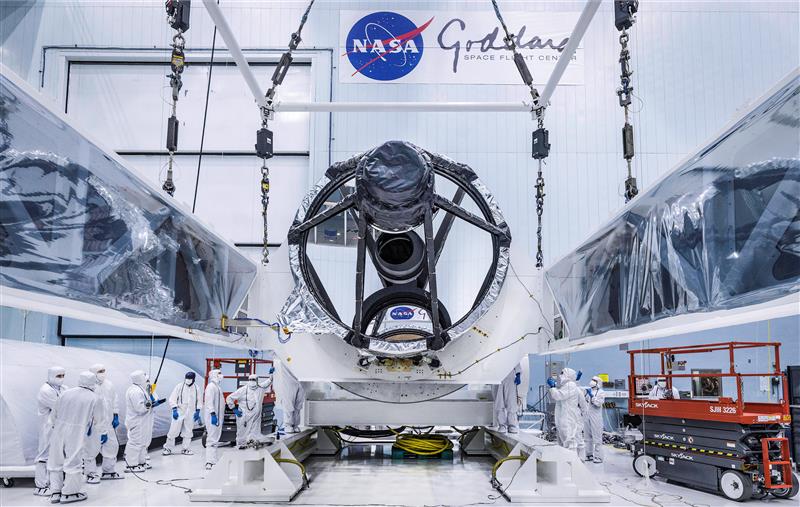
No comments:
Post a Comment